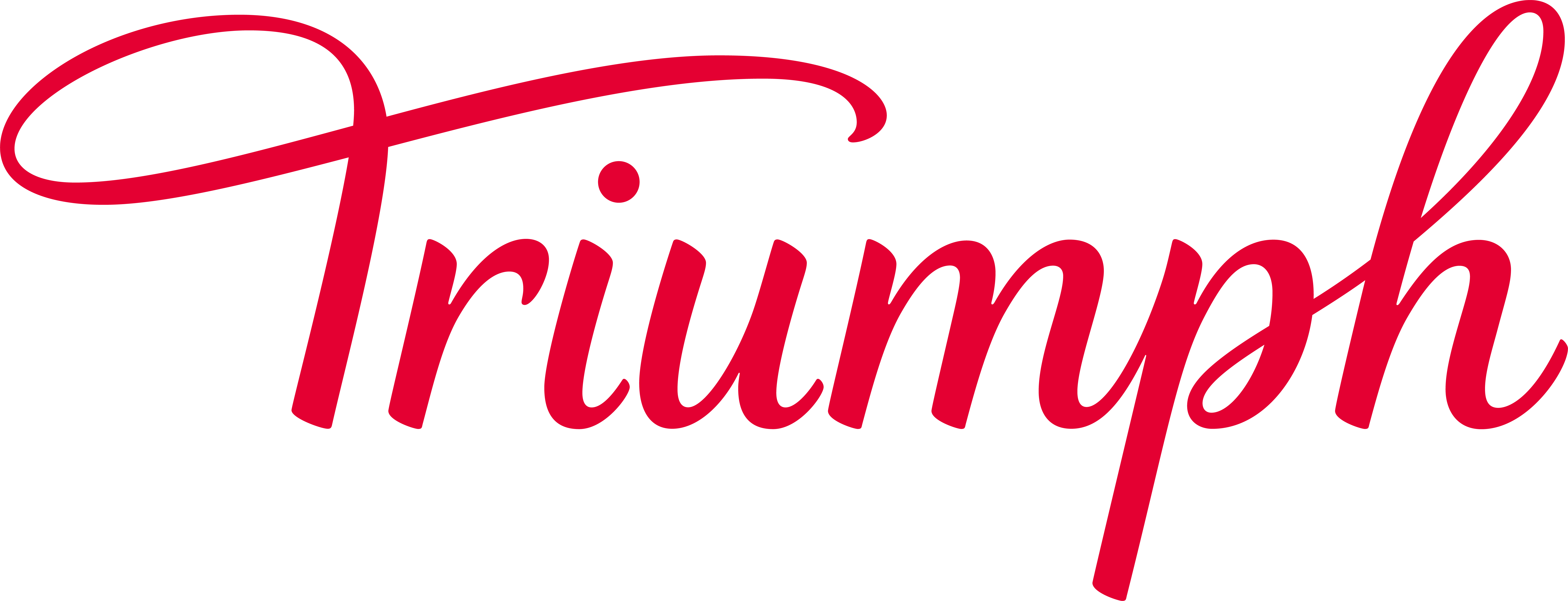Time of Expansion

1948
A new beginning: production is restarted, the company reinitiates its extremely dynamic development and from 1953 begins trading under the name “Triumph International”. From 1954 to 1959 Triumph expands throughout Europe, opening branches in Belgium, the UK, Sweden, Italy, Finland, Norway, Denmark, Austria and the Netherlands.Years of the Economic Miracle - Celebrating the new prosperity“New Look” - an emphasis on feminine forms. Corsets make a comeback, with Triumph International setting the pace and becoming market leader. In 1954, Triumph introduces a bra strap manufactured with stretch yarns. 1956 marks the beginning of the long-lasting collaboration with the renowned German couturier Heinz Oestergaard. Triumph International establishes fashion shows in which for the first time the models wear no leotards under the corsetry. In 1959, the Berlin Hilton is the location for the largest lingerie fashion show held to date.

1960
Triumph International expands into Asia, opening branches amongst others in Hong Kong, Singapore, Taiwan, Thailand, China, and India over the next few decades. By the mid-60s, Triumph is one of the three leading manufacturers in Japan. European business is expanded into Spain, Greece, France and Portugal. By 1965 Triumph International is selling lingerie in 92 countries.Swinging Sixties - Revolutionary DevelopmentIn 1959 “Lycra®”, the first elastane fibre, revolutionises lingerie fashions with fine, light fabrics and improved characteristics in terms of both washing and wearing. In 1966, Triumph launches the “Doreen“ lingerie range, made of polyamide with 15% elastane. In 1967, Triumph is the first to use the molded cup technique to eliminate the need for seams. Triumph begins production of bikinis and swimsuits in 1962. Advertising also moves in a new direction directed at the self-assured woman.

1977
The factories in Austria, Germany and Hong Kong cement Triumph’s reputation as a high-tech fashion company. They become information centres for textile technicians and clothing experts from all over the world. In 1972 Triumph buys into Brazilian, Australian and South African markets.The wild seventies – a new lightnessThe glamorous “Triumph 70 Fashion Show” - the biggest fashion show ever seen at that time - tours through Europe and Asia. Social changes go hand in hand with flower power and the miniskirt. Again as an industry leader, Triumph develops extremely thin and light fabrics using Lycra® and nylon. At the end of the 1970s the “sloggi” brand introduces “The Cotton Revolution”, thanks to an innovation in fabrics, the brief is particularly soft, figure-hugging and wrinkle-free. Youth and sexual freedom become important advertising themes: beauty, sexuality and sensuality are depicted realistically. A fully transparent bra is advertised in Germany with the slogan “So what? – The body is in fashion”.
1986
Triumph International celebrates its 100th birthday. In the year of this celebration the group employs 19,000 people worldwide and achieves a total turnover of more than CHF 996 million. The company takes over the exclusive French men‟s underwear brand HOM. In 1988 franchising agreements are reached with Uruguay and former East Germany. 1989 sees the further expansion into Canada, New Zealand and South Korea.
The return of the waist – the bustier and the cult of the body
The aerobics craze sweeps the world – the sports active woman requires a special bra and Triumph International offers just the right models: with secure support and a high level of wearer comfort. The zeitgeist is difficult to summarise, with each trend accompanied by a counter-trend. Designers suddenly turn refined lingerie into fashionable outerwear, worn confidently as bodies and bustiers underneath jackets. Luxurious bodies, bustiers, tops, bras and panties are in great demand again and Triumph International understands just how to make dreams come true.
1990
With the purchase of the exclusive lingerie brand Valisère in 1990, Triumph International broadens the diversity of its range. The Nineties stand for constant expansion into Eastern Europe and with new production plants in Thailand, in the Peoples Republic of China and in India. The company expands its number of employees to more than 35,000.
The Feel-Good Decade – A Longing for Nature
Within the Nineties consumers again long for more naturalness. Triumph International already banned the excessive use of chemicals in production processes in the seventies. Now, high-quality organic cotton, along with nickel-free hooks and eyes, come into use. While shoulder pads disappear the push-up bra flourishes: In Germany, a proud and sensual top model Naomi Campbell is shown on three meters high posters. The message: „For the Body – for the Senses“. The turnover reached with push up bras multiplies by the factor six. In 1998 Triumph launches the globally innovative “Simply Soft”: a bra without seams in which the wearer’s body heat causes the material to adapt to her shape.

